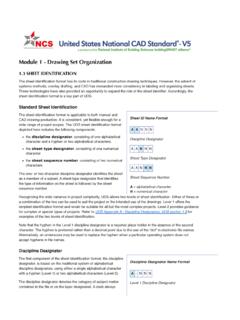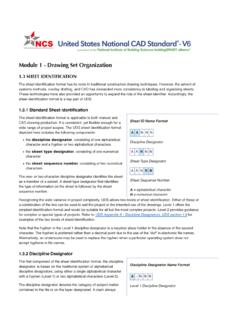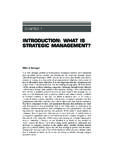Transcription of Spotlight on statistics - World Health Organization
1 Gender and Health workforce statisticsSpotlight on statistics is a series of fact fi les on Health workforce statistics produced by the Department of Human Resources for Health , World Health Organization . For more information, please contact: Visit our web site: make up about 42% of the estimated global paid working population. Within the Health sector, in many countries women comprise over 75% of the workforce, making them indispensable as contributors to the delivery of Health care services.
2 However, in many countries, women still tend to be concentrated in the lower-status Health occupations, and to be a minority among more highly trained professionals. In particular, the distribution of women by occupational category tends to be skewed in favour of nursing and midwifery personnel and other caring cadres such as community Health workers. Women are often poorly represented in other categories, physicians, dentists, pharmacists and managers.
3 The under-representation of women in managerial and decision making positions may lead to less attention to and poorer understanding of both the particular features of working conditions that characterize much of women s employment, and the Health care needs specifi c to women. In many contexts, access to female providers is an important determinant of women s Health service utilization patterns. Omission of gender considerations may also lead to inadequate Health system responsiveness to the needs of men: for example, reproductive Health services are often not set up so as to encourage male involvement.
4 Gender analysis of the Health workforce may reveal that Health systems themselves can refl ect or even exacerbate many of the social inequalities they are meant to address and be immune from. Participatory approaches in Health workforce planning, development and management should be ensured, where both women and men Health workers are given an active role to ensure that research being undertaken is relevant to their needs and interests. Research, policy and programme eff orts to address gender equality in the Health workforce should lead to strengthened Health systems more analysis of the Health workforce The collection, processing, dissemination and use of sex-disaggregated data can help to plan, monitor and evaluate successful gender-sensitive interventions in the work place.
5 Bringing attention to the ways in which social and behavioural diff erences between women and men may lead to inequities in working conditions in the Health sector and, ultimately, in inequities between women s and men s access to Health care services and Health outcomes. Access to reliable, timely information on gender and the Health workforce can inform the steps needed to achieve gender equity. A strategy for gender analysis of the Health workforce should include four key components: Building capacity at the international, national and sub-national levels for gender analysis in workforce policy and planning; Refl ection of gender in national Health workforce de-velopment budgets; Promoting the use of sex-disaggregated data in mon-itoring and evaluation activities at all levels.
6 And Establishing tools, methods and approaches for Health workforce analysis, originally developed in relation to predominantly male employment sectors, should be validated and extended for analyses of women s jobs. Analyses of working conditions should consider factors more specifi cally aff ecting women workers, such as physical work loads, reconciling work and family, relations with clients and sexual harassment.
7 For example, some incentives for addressing worker productivity and retention may be more favourable to female than to male workers, such as fl exible leave arrangements and career-break schemes. Monitoring, assessing and reporting country experiences of these indicators should be the same time, caution should be taken to avoid over-emphasizing gender diff erences, in relation to other characteristics relevant to Health workforce studies.
8 Education and training, access to resources, client volume, supervision and age are among the many other explanatory variables involved in processes that characterize Health worker productivity and fact file on Health workforce statisticsSpotlighton statisticsIssue 2, February 2008 Sex distribution of the Health workforce, selected countries, labour force survey data0255075100 AustriaCanadaDenmarkGermanyHungaryNether landsRussian FederationSpainSwitzerlandUnited KingdomUnited States of America% femaleSource: Gupta et al.
9 , 2003 Next issue: Monitoring education and training for Health workers Selected statisticsThree main employment dimensions have been identifi ed as the starting point for the study of gender equality in the labour force: occupation, working time and earnings. Occupational segregation by gender can correspond to either vertical clustering (diff erentials in the sex ratio according to relative job status) or horizontal clustering (sex diff erentials according to specialization).
10 Working time can aff ect workers economic position, especially when it results in lower monetary and non-monetary compensation among part-time workers compared to their full-time counterparts, as well as less job security and fewer opportunities for promotion. Because the labour conditions and opportunities vary markedly across occupations and countries, gender equity can be referred to as the absence of observed gender diff erences.

















